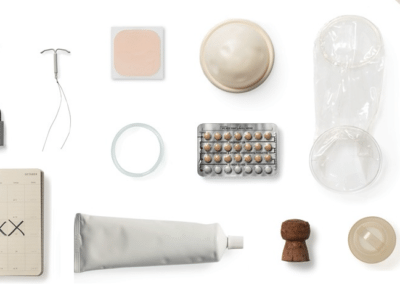Birth Control 101 is a multi-part series covering everything you need to know about birth control in the United States. It has all the details you need to make the best decision for your body, like how each method works, the pros and cons, effectiveness, cost, and where to get them. After we’re done, you’ll basically be an expert, and you’ll definitely be able to make an informed decision about how to stay safe when you’re having sex.
This segment covers everything you need to know about the Birth Control Implant.
Check out our Birth Control 101 section for details on every birth control method, and Birth Control Basics for a quick and dirty overview.
The Implant
What is it?
The birth control implant, also called by the brand name Nexplanon, lasts up to five years and is a long-acting reversible contraception (LARC). A small, thin, plastic rod about the size of a matchstick is inserted into your upper arm by a doctor. Your arm will be treated with a local anesthetic, and there will be a bit of discomfort during the insertion. It takes no more than five minutes. You can’t see the implant once it’s in, and you can’t feel it unless you press that area, but you may develop a small scar at the insertion point.
How does it work?
Like the shot, the implant contains progestin only. It gives off a very small amount of the hormone continuously to prevent pregnancy. Progestin works by thickening the cervical mucus so that sperm cannot successfully swim through it, and can also prevent ovulation altogether. One month after insertion, you have a check-up with your doctor to check the insertion spot and address any questions or concerns. After three to five years, you return to your doctor to have the implant removed or replaced.
Effectiveness
The birth control implant is 99.5% effective.
Pros
- Just like the shot, this method is long-lasting, invisible, nothing to remember, and essentially worry-free.
- It also tends to produce lighter or fewer periods or no periods at all. According to Planned Parenthood, after one year of using the implant, one-third of users will stop having periods completely.
Cons
- The implant can cause inconsistent, irregular, and erratic periods, more so than the shot or other birth control methods. You may get your period unexpectedly or at random, without warning. With time, your periods may become more regular, and there are drugs that you can take to have a more regular period pattern.
- The implant is inserted into your arm and may cause pain during insertion and removal. It may leave a small scar.
Cost
The price ranges between $400 to $800 to cover the cost of the exam, implant, and insertion. This is a lot of money upfront, but it is a one-time cost every three to five years, for as long as you keep getting the implant. Removal typically costs between $100 and $300. Nexplanon may be covered by your health insurance.
Where to Get It
Talk to your doctor, gynecologist, or a health or family planning clinic (like Planned Parenthood). Not all doctors insert implants or are experienced in insertion and removal. Check to make sure there are no additional costs.
Don’t stop there… learn more about the other methods so you can find the perfect fit! Check out these articles in our Birth Control 101 series.
Birth Control 101: The Basics of Birth Control
Birth Control 101: The Pill
Birth Control 101: The Patch
Birth Control 101: The Ring
Birth Control 101: The Shot
Birth Control 101: The Implant
Birth Control 101: Hormonal and Copper IUDs
Birth Control 101: Male Condoms
Birth Control 101: Cervical Cap
Birth Control 101: Diaphragm
Birth Control 101: The Sponge
Birth Control 101: Spermicide
Birth Control 101: Pull Out Method






I have the implanon implant and I absolutely adore it! I’ve had it in for 18 months, and I stopped getting my period after the first month of it. I love it because it’s long term, and extremely low maintenance- I don’t have to worry about BC until I graduate college! Some people get freaked out about it because it’s just under the surface of my skin, and because it was put it with a big needle, but for me the benefits far outweigh the inconveniences. With my insurance, my co-pay was only $25 too.
Side-note, it’s also fun to freak people out by having them touch it!
That’s awesome! Sounds like a pretty neat option.